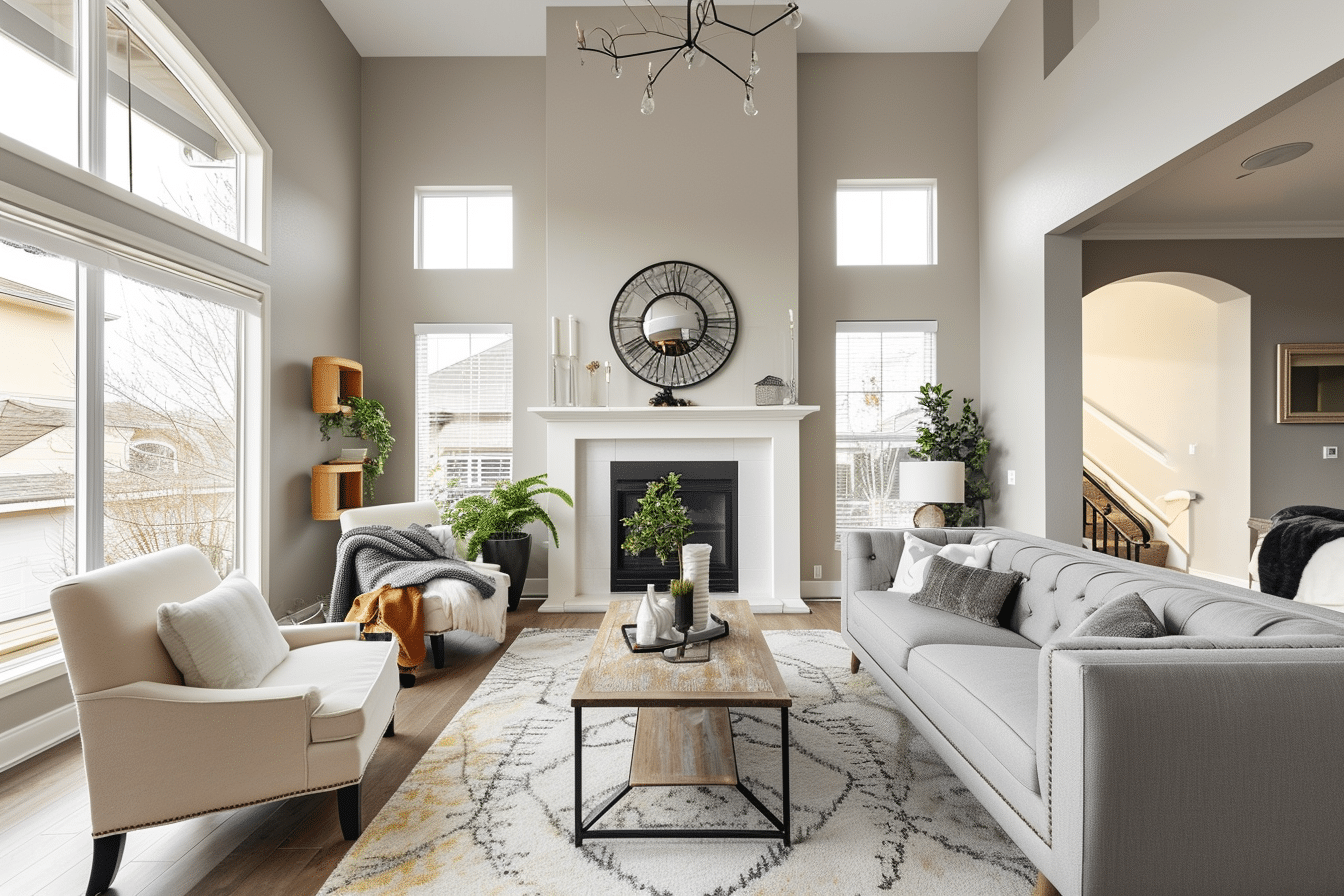
Virtual Home Staging: Quick and Easy Guide for Modern Sellers
Virtual home staging has revolutionized the real estate industry by providing an innovative and cost-effective alternative to traditional home staging methods. This technology allows homeowners and real estate professionals to enhance the appearance of a property with the use of virtual furniture, accessories, and décor. As the pioneers of this movement, companies like Virtually Staging Properties have paved the way for this unique approach to marketing properties.
The process of virtual home staging involves digitally furnishing an empty room with realistic, high-quality images of furnishings and decor, giving potential buyers a better understanding of the space and its possibilities. This technology-driven method has become increasingly popular in real estate marketing, as it provides potential buyers with a more immersive and personalized experience when viewing properties online.
In comparison to traditional staging methods, virtual home staging can be more cost-effective and efficient. The industry continues to innovate with new technologies and platforms, making this marketing technique accessible to real estate professionals, homeowners, and even DIY enthusiasts who want to create appealing spaces without the hassle and expense of physical staging.
Key Takeaways from Virtual Home Staging
- Virtual home staging is an innovative, cost-effective alternative to traditional staging methods
- The process involves digitally furnishing empty rooms with realistic images of furniture and décor
- The technology has become prevalent in real estate marketing, offering a more immersive and personalized experience for potential buyers
Understanding Virtual Home Staging
History and Evolution
Virtual home staging has come a long way since its inception. With the advancements in technology, it has become a popular option in the real estate industry. In the early days, traditional staging, which involved the physical arrangement of furniture and decoration in a property, was the go-to method for showcasing homes. But as technology evolved, virtual staging emerged as a viable alternative. This method uses computer-generated images to create realistic and appealing visuals of an empty or partially furnished space. As the real estate market embraced new technologies, virtual staging became an integral part of the sales process.
Benefits Over Traditional Staging
There are several advantages of virtual home staging over traditional staging. For one, it is often more cost-effective; traditional staging can be expensive, especially when considering the costs of renting or buying furniture, transport, and staging services. In contrast, virtual staging requires only the services of a skilled graphic designer, reducing overall expenses.
Additionally, virtual staging offers a greater level of flexibility in terms of design and presentation. A virtually staged home can be easily updated or changed according to the preferences of the potential buyer. For example, if a client prefers a different color scheme or furniture style, it is much easier to modify the virtual staging compared to its physical counterpart. This level of customization is something that traditional staging cannot compete with.
Moreover, virtual staging can make a property more accessible and appealing to a wider audience. Traditional staging often requires in-person visits, which can be inconvenient for out-of-town potential buyers. Through virtual staging, they can get a realistic visual representation of the property, helping them make an informed decision from afar. Will Virtual Staging Replace Traditionally Staged Rooms? discusses the various perspectives on virtual and traditional staging.
In summary, virtual home staging offers several benefits when compared to traditional staging, making it a popular choice in the modern real estate industry. With its cost-effective and flexible nature, as well as its ability to reach a broader audience, virtual staging has proven to be a valuable tool for showcasing properties effectively and efficiently.
Key Components of Virtual Staging
Virtual Furniture
Selecting the perfect furniture for virtual staging is essential to create a realistic and inviting atmosphere. With a myriad of styles, colors, and designs to choose from, it’s easy to customize the furniture according to the target buyers’ preferences. A few tips for selecting virtual furniture include:
- Mix and match different styles to add visual interest.
- Keep color schemes consistent for a cohesive look.
- Consider size and scale to avoid overcrowding or under-furnishing a room.
Lighting and Ambiance
Proper lighting plays a crucial role in enhancing an empty space’s overall appeal. When virtually staging a room, it’s essential to pay attention to the following lighting aspects:
- Use natural light by placing windows and doors strategically.
- Incorporate varied light sources, such as ambient, task, and accent lighting.
- Choose the appropriate color temperature for different rooms.
Combining these elements will create a warm and inviting ambiance that appeals to potential buyers.
Room Layouts and Space Planning
A well thought out room layout not only highlights the functionality of a space but also helps potential buyers visualize themselves living in the home. When creating virtual room layouts, interior design principles should be considered:
- Balance: Achieve a balanced room design by distributing visual weight evenly.
- Harmony: Combine architectural features, furniture, and decoration to create a unified look.
- Proportion: Maintain a proper scale between furniture items and room size.
Incorporating these essential elements of virtual staging—furniture, lighting, and room layouts—will help attract buyers and showcase the true potential of any property.
How Virtual Staging Works
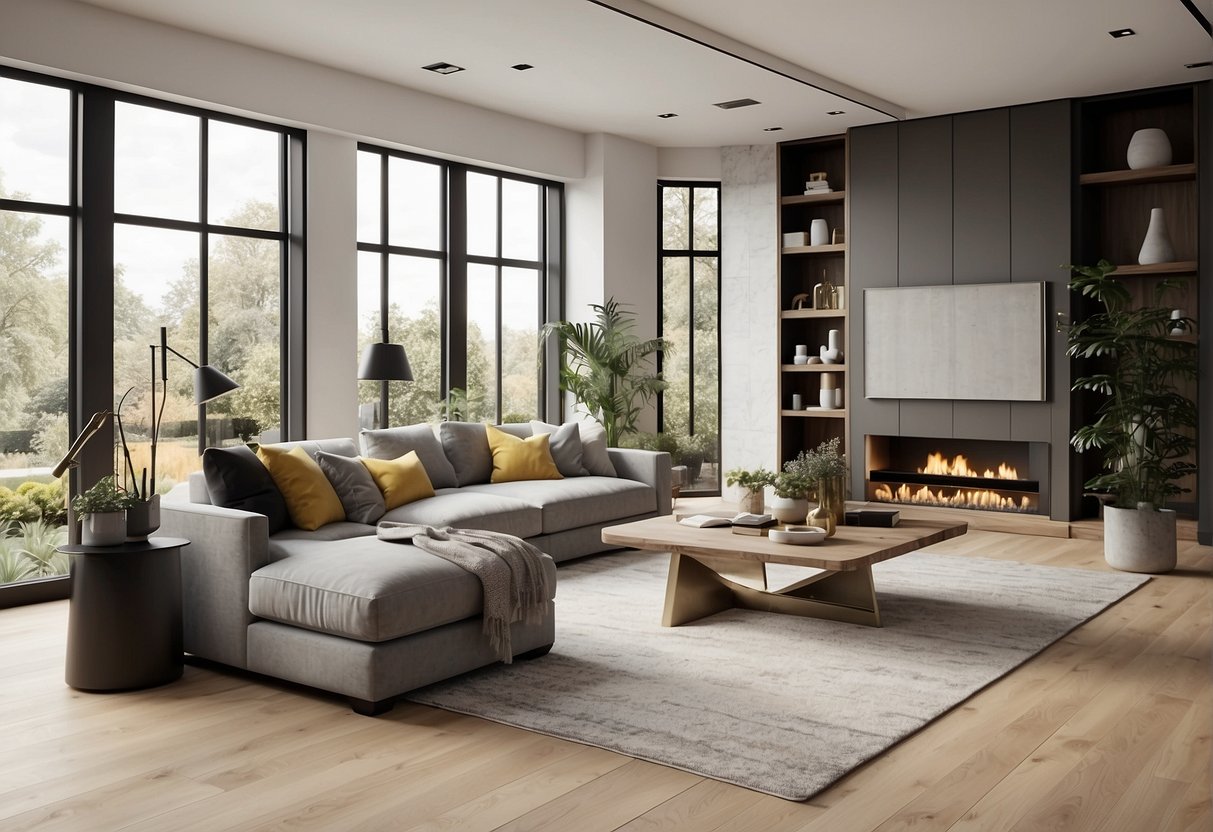
Software and Tools
There are various virtual staging software options available in the market, each with its own set of features and pricing plans. Some popular software options include BoxBrownie, VisualStager, VHT Studios, and roOomy. These tools allow users to create realistic 3D renderings of a property, furnish it with stylish furniture and accessories, and help potential buyers visualize their potential new home.
| Software | Features | Pricing |
|---|---|---|
| BoxBrownie | High-quality images, fast turnaround, 24-hour support | Starts at $32 per image |
| VisualStager | Easy-to-use interface, flexible pricing, large furniture library | Starts at $15 per image |
| VHT Studios | Full-service, professional photographers, virtual walk-throughs | Contact for custom pricing |
| roOomy | App-based, intuitive design, customizable templates | Contact for custom pricing |
The Staging Process
The virtual staging process typically involves the following steps:
- Property images: High-quality photos of the empty property are required. Ensure proper lighting and composition for optimal results.
- Choose furniture and accessories: Users can browse through a vast library of furniture and accessories to find those that match the desired style.
- Place and arrange items: Furniture and accessories can be placed and arranged within the software to create a realistic and appealing staged home.
- Render the image: The software renders a high-resolution, staged image of the property.
- Share with potential buyers: Completed images can be shared on property listings and social media to attract the attention of potential buyers.
Comparison of Virtual Staging Solutions
When comparing virtual staging solutions, consider the following factors to find the best software for your needs:
- Ease of use: Tools like VisualStager and roOomy offer user-friendly interfaces and intuitive design experiences.
- Furniture library: Look for software with a large and diverse selection of furniture and accessories to suit various styles and preferences.
- Pricing: Virtual staging software can vary significantly in price. Be sure to select the one that fits your budget and offers the best value for your needs.
- Support: Some companies, such as BoxBrownie, offer 24-hour customer support to address any concerns or questions during the staging process.
The Role of Professionals
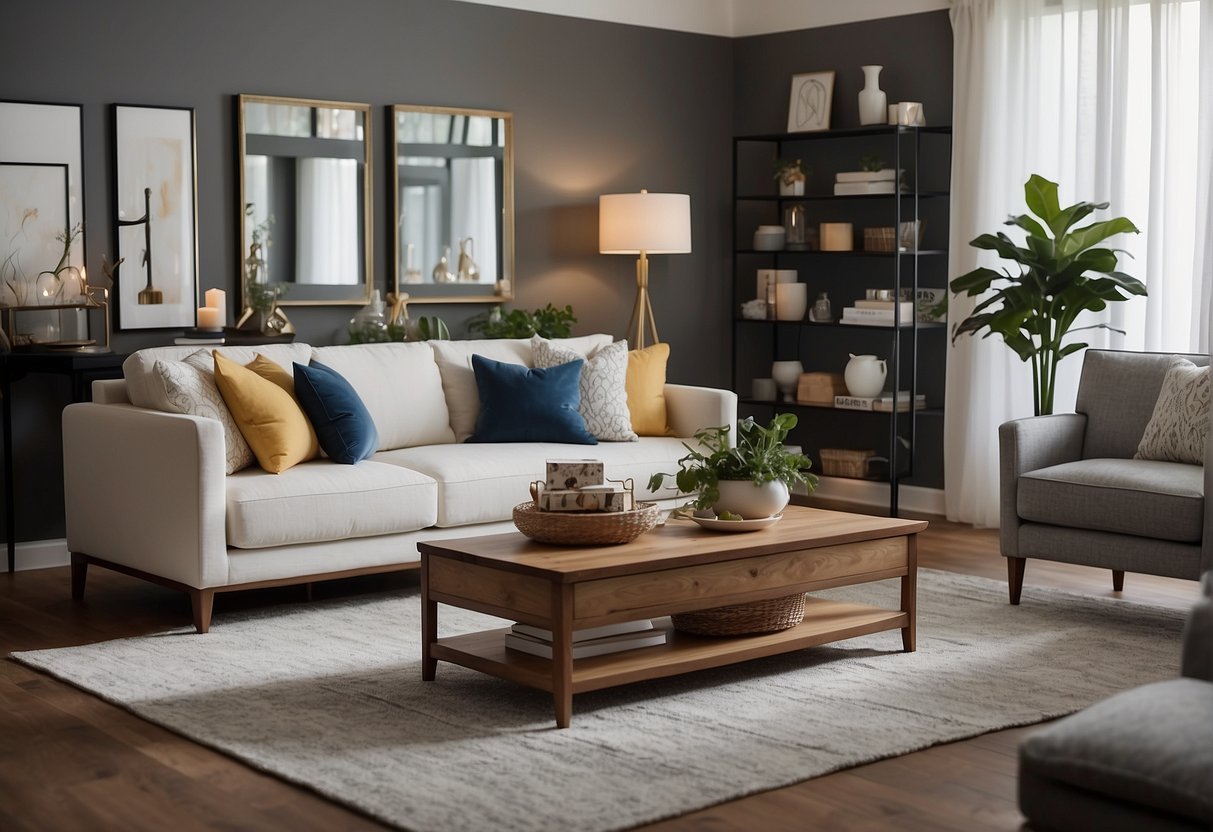
Real Estate Agents
Real estate agents at OKCHomeSellers are at the forefront of leveraging virtual home staging, a powerful tool that transforms how properties are presented to potential buyers. By employing virtual staging for all our vacant listings, OKCHomeSellers agents assist clients in visualizing a property’s full potential, offering a diverse range of layouts and styles tailored to buyer preferences. The advantages of virtual staging for our team include:
- The ability to save time and effort, streamlining the staging process compared to traditional methods.
- Expanding market reach through online platforms, attracting a broader audience of potential buyers.
- Flexibility to modify and update the virtual design easily to align with individual buyer tastes.
Interior Designers
Interior designers are instrumental in virtual home staging. They collaborate with real estate agents to create a visually appealing and functional space. Some key skills they bring to the table are:
- An eye for color schemes and furniture placement
- A knack for blending styles and design elements
- Tailoring designs for different property types
Interior designers also keep up with trends to ensure the staged property appears current and on-point, making potential buyers feel at home.
Virtual Staging Experts
Virtual staging experts are the tech-savvy professionals responsible for bringing the designs to life. They work closely with both real estate agents and interior designers to create realistic 3D renderings of the staged property. Their cutting-edge software allows them to:
- Create a virtual model of the home
- Populate the space with furniture, accessories, and color schemes
- Generate photo-realistic images for marketing purposes
In summary, the perfect virtual home staging process is a team effort involving real estate agents, interior designers, and virtual staging experts working together to showcase a property’s best features and attract potential buyers.
Virtual Home Staging in Real Estate Marketing
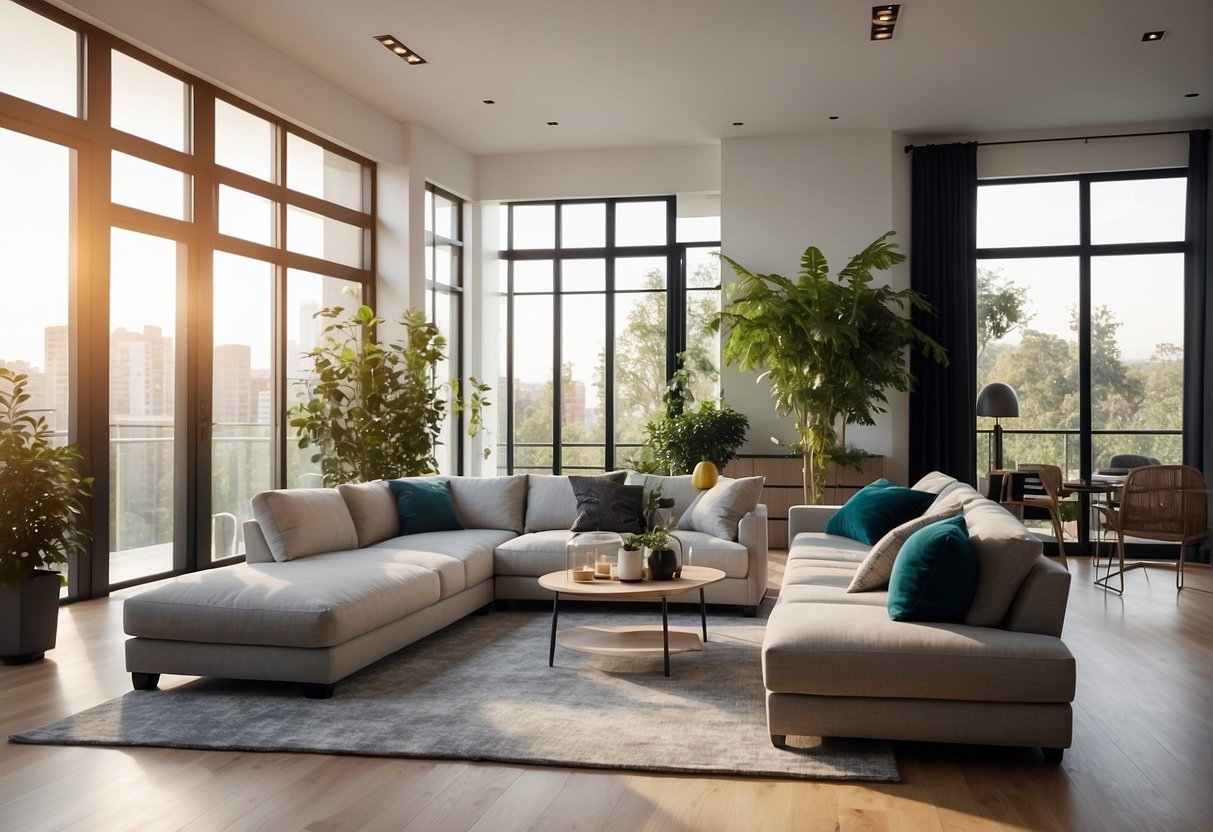
Attracting Potential Buyers
When it comes to real estate marketing, attracting potential buyers is key. One way to do this is through virtual home staging. This innovative approach allows real estate agents to digitally furnish and decorate properties, allowing buyers to better visualize the potential of a space. Here are a few benefits of virtual home staging:
- Time and money saving: Unlike traditional staging, virtual staging eliminates the need to rent and physically move furniture, which can be quite expensive and time-consuming.
- Endless design options: Virtual staging offers limitless possibilities, enabling agents to cater to the unique tastes of various buyers.
- Better online presence: Attractive property photos increase the chances of captivating potential buyers while browsing online.
Enhancing Property Photos
A picture is worth a thousand words, and this is certainly true in real estate marketing. High-quality property photos are essential for capturing buyers’ attention, and virtual home staging can significantly enhance these images. Consider the following:
- Empty to furnished: Virtual staging can transform a vacant property into a warm, inviting space, making it easier for potential buyers to envision themselves living there.
- Updating outdated decor: If a property has outdated furniture or unappealing decor, virtual staging can instantly modernize the space, providing a fresh and appealing look.
- Showing potential: Virtual staging can help to highlight the best features of a property, emphasizing its potential and encouraging buyers to see beyond any flaws or imperfections.
In conclusion, virtual home staging is a powerful tool in real estate marketing that can attract potential buyers and enhance property photos. With its numerous advantages, this innovative approach is quickly becoming the go-to choice for many agents looking to stand out in today’s competitive market.
Costs and Pricing Models
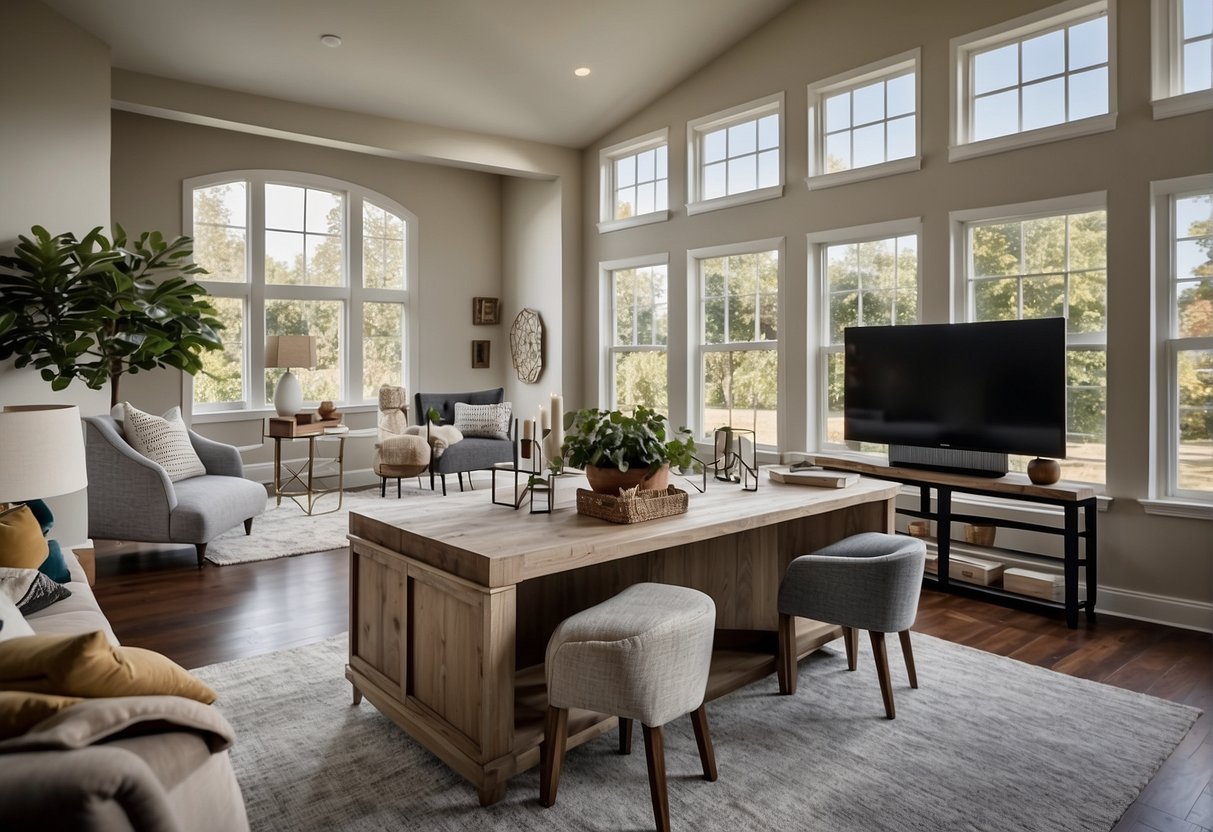
When it comes to virtual home staging, there are a variety of pricing models available, making it easier for homeowners and real estate professionals to find a solution that fits their budget. In this section, we’ll discuss some affordable solutions and the investment vs. return aspect of virtual staging.
Affordable Solutions
There are several cost-effective options available for those looking to benefit from virtual staging without breaking the bank. Some of these options include:
DIY software: Some virtual staging software can be purchased for a one-time fee, allowing users to stage their own properties. This can be a more affordable long-term option if you have multiple properties to stage.
Pay-per-photo services: Many virtual staging companies offer a pay-per-photo service, where users can purchase a set number of staged photos at a fixed price. This can be an affordable option for those looking to stage only a few rooms.
Monthly subscriptions: Some virtual staging companies offer monthly subscription plans for a more cost-effective solution. These subscriptions often include a specific number of staged photos per month and can be adjusted based on your needs.
To help illustrate the pricing differences, here’s a table showing the approximate costs of each option:
| Option | Approximate Cost |
|---|---|
| DIY software | $50 – $500 |
| Pay-per-photo | $15 – $50 per photo |
| Monthly plans | $50 – $300/month |
Investment vs. Return
While it’s important to consider the affordability of virtual staging, it’s also crucial to keep in mind the potential return on investment (ROI). Virtual staging can help attract more potential buyers by showcasing the property in its best possible light. This could lead to a faster sale and potentially a higher selling price.
By investing in a cost-effective virtual staging solution, homeowners and real estate professionals can enjoy the benefits of staging while minimizing the upfront costs. Ultimately, the ROI for virtual staging can be significant, making it a worthwhile consideration for those looking to sell their properties quickly and efficiently.
In conclusion, virtual home staging offers a variety of cost-effective solutions to fit different budgets and needs. By examining the costs and potential return on investment, making a decision on which virtual staging option to use becomes easier and more effective.
Technology and Innovation in Virtual Staging
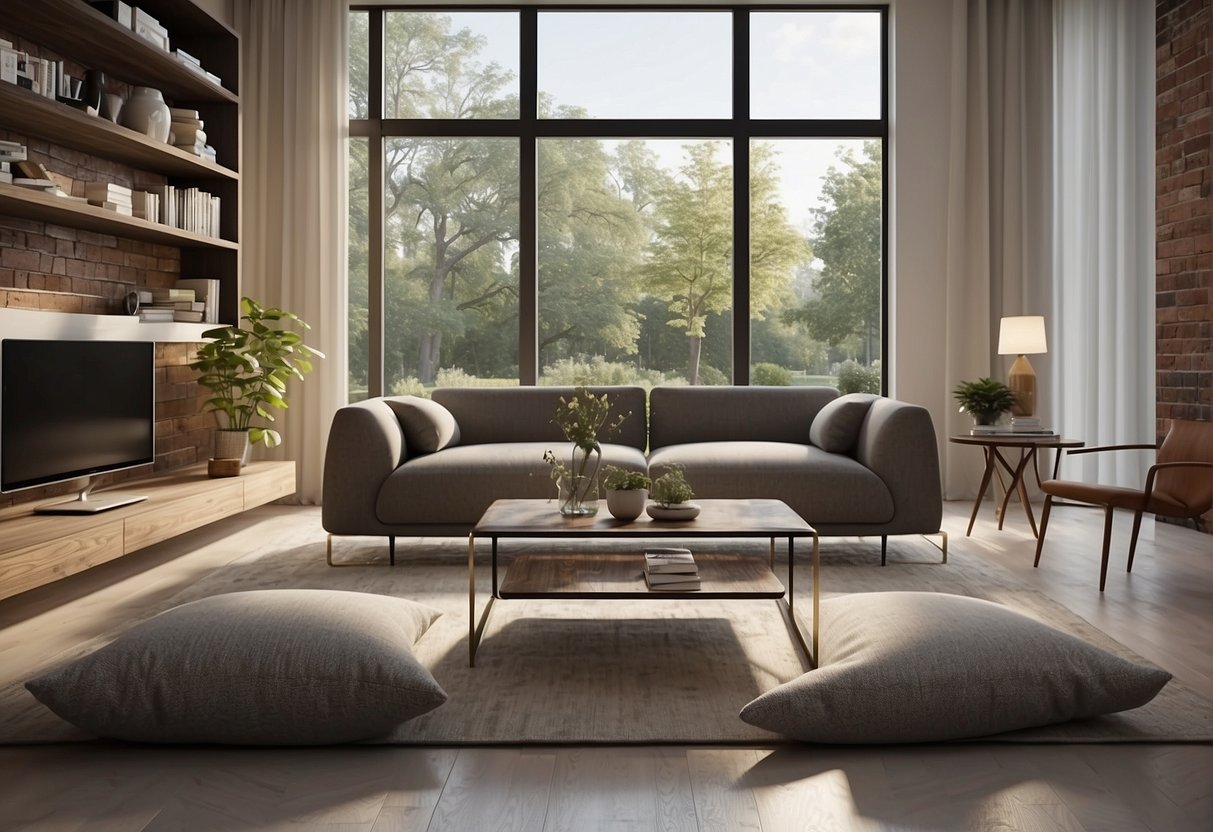
Augmented Reality Applications
In the realm of virtual home staging, technology plays a vital role. One key player is augmented reality (AR), which allows designers and prospective buyers to virtually transform a space with the swipe of a finger. By using AR applications, home stagers can efficiently create attractive interiors without investing in physical furniture or accessories.
Some advanced AR platforms, like Virtual Staging AI, enable users to view an immersive, life-like visualization of a property. These innovative applications not only cut costs but also save time by allowing for quick design edits and updates.
Future of Home Staging
The future of home staging lies in harnessing technology to provide a seamless experience. With continuing advancements in AR, expect to see increased accessibility and ease of use for consumers.
- Remote staging: People from all around the world will be able to virtually stage homes, offering a more extensive range of design options without geographical limitations.
- Streamlined collaboration: Online platforms like augmented reality applications will facilitate seamless communication between designers, stagers, and clients, enabling changes to be made in real-time.
- Personalized visuals: Custom design files can be created and applied to properties for a tailored virtual staging experience.
As technology continues to evolve, the potential for growth in the virtual home staging industry is just beginning to be realized.
DIY vs. Professional Virtual Staging
Choosing the Right Path for Homeowners
When it comes to virtual staging, homeowners have two main options: a do-it-yourself (DIY) approach or hiring a professional service. Each route has its own set of pros and cons, and ultimately, the choice depends on personal preferences and budget.
DIY Virtual Staging:
Pros:
- Affordability: One major advantage of DIY virtual staging is the cost. There are a variety of software tools available online, many of which are fairly inexpensive or even free.
- Control: For those who enjoy being involved in every step of the process, DIY virtual staging allows homeowners to have full control over the design and layout of the staged space.
Cons:
- Time-consuming: On the downside, DIY projects can take a significant amount of time, especially for those who are not well-versed in using design software.
- Quality: While one can create decent results on their own, it may not match the quality of professional staging services, potentially impacting the overall appeal of the space.
Professional Virtual Staging:
Pros:
- Quality: Professional virtual stagers have the experience and skills necessary to create realistic, high-quality images, helping to create a stronger impact on potential buyers.
- Convenience: Hiring a professional saves homeowners the effort of learning new software and spending time on design, allowing them to focus on other aspects of the home-selling process.
Cons:
- Cost: The main drawback of hiring a professional stager is the expense, which may not be suitable for every budget.
When deciding between DIY and professional staging, it’s important to consider factors such as furniture replacement. A professional staging service typically has access to an extensive library of furniture and decor to choose from, ensuring that the virtual space aligns with current trends and design principles. On the other hand, DIY options may offer limited selections, forcing homeowners to make compromises on the space’s overall aesthetic.
At the end of the day, homeowners should take the time to weigh the benefits and drawbacks of each approach, deciding which option best aligns with their needs, expectations, and budget.
Case Studies and Success Stories
Transformative Before and After
Casual Home Staging Co. is a company providing virtual staging solutions to homeowners and real estate professionals, enabling them to sell homes at a faster pace and for a higher value. They have built a strong reputation by delivering outstanding results with a casual, friendly approach. Here are some success stories that highlight their effectiveness.
Example 1: A newly renovated three-bedroom apartment was listed on the market for over 6 weeks without any real interest from potential buyers. Right after using Casual Home Staging Co.’s virtual staging solutions, the real estate agent started receiving more inquiries, and the house was sold within two weeks at 5% above the initial asking price.
Before: The empty apartment looked rather dull, with dark spaces and a lack of visual appeal.
After: The virtually staged space showcased modern furniture, vibrant colors, and personalized touches, allowing potential buyers to envision themselves in the apartment.
Example 2: A real estate professional was struggling to sell a large family home with dated decor and an awkward layout. The agent decided to use the services of Casual Home Staging Co., as they have experience catering to a wide range of styles and property types.
Before: The home seemed cluttered and outdated, which made it difficult for potential buyers to see its potential.
After: The virtual staging removed the old furniture and added contemporary pieces with a cohesive design, maximizing the appeal of the house.
Example 3: A homeowner wanted to sell their small, unfurnished, and uninhabited property but didn’t have the budget for traditional staging. They turned to Casual Home Staging Co., who helped transform the space digitally.
Before: The empty rooms looked quite small and uninviting.
After: After the virtual staging, the space appeared cozy and welcoming with thoughtfully selected furniture and accessories to make it more appealing.
| Before | After | |
|---|---|---|
| 1 | Empty and dull apartment with dark corners | Vibrant and personalized space |
| 2 | Cluttered and outdated | Contemporary and well-designed layout |
| 3 | Small, unfurnished, and empty | Cozy and welcoming space |
In summary, these case studies show how Casual Home Staging Co. effectively used virtual staging solutions to help sell homes in various situations. The transformative before-and-after images truly highlight the power of their services in enhancing properties for real estate professionals and homeowners alike.
Additional Virtual Staging Considerations
Legal and Ethical Aspects
When engaging in virtual home staging, it is essential to keep in mind the legal and ethical aspects involved. For example, altering a property’s imagery may be considered misleading to potential buyers if the changes are dramatic and do not represent the true state of the property. In order to avoid potential issues, it is vital to maintain transparency and be explicit about the virtual staging used in marketing materials. Properly disclosing that the images have been virtually staged can help prevent misunderstandings and potential disputes.
Some useful guidelines to follow include:
- Clearly stating that the images have been virtually staged as a note in the listing or marketing materials.
- Avoiding the removal or addition of major structural elements in the photos.
- Ensuring that the virtually staged images align closely with the potential of the actual property.
Maintaining Authenticity
Maintaining authenticity throughout the virtual staging process is crucial for creating a genuine representation of the property. Some tips for preserving authenticity in virtual staging include:
- Realistic Furniture Selection – Choose furniture and decor that complements the property’s style and is achievable within the target buyer’s budget. Selecting pieces that are either too upscale or mismatched can give a false impression of the property.
- Appropriate Room Staging – Avoid over-stuffing rooms with too many items, as it can make the space feel cluttered and small. Aim for a minimalist approach, showcasing just enough to convey the room’s purpose while leaving some room for buyers to envision their own personal touches.
- Consistency in Style – Ensure that the virtually staged furniture and decor are consistent throughout the property. Mixing various styles can confuse potential buyers about the actual property’s atmosphere.
- Accurate Color and Lighting – Use accurate colors and lighting in the images that mirror the actual property’s ambiance and natural light sources. This will help potential buyers get a better sense of the true feel of the property’s interior.
In summary, to avoid legal and ethical issues in virtual home staging, maintain transparency and adhere to guidelines that keep the virtually staged images as close to reality as possible. Emphasizing authenticity in the process will help convey a genuine representation of the property while respecting ethical standards.
Luxury Specialist at McGraw Realtors
With a diverse background, including a career as an Air Force fighter pilot and entrepreneurship, Bill transitioned to real estate in 1995. Co-founding Paradigm Realty with his wife, Charlene, he quickly rose to prominence in Oklahoma City’s luxury real estate scene. Now, as one of the top agents with annual sales surpassing $20 million, Bill’s dedication to exceptional service remains unparalleled. With a legacy spanning over two decades in the industry, Bill’s expertise and commitment make him a trusted name in luxury real estate.